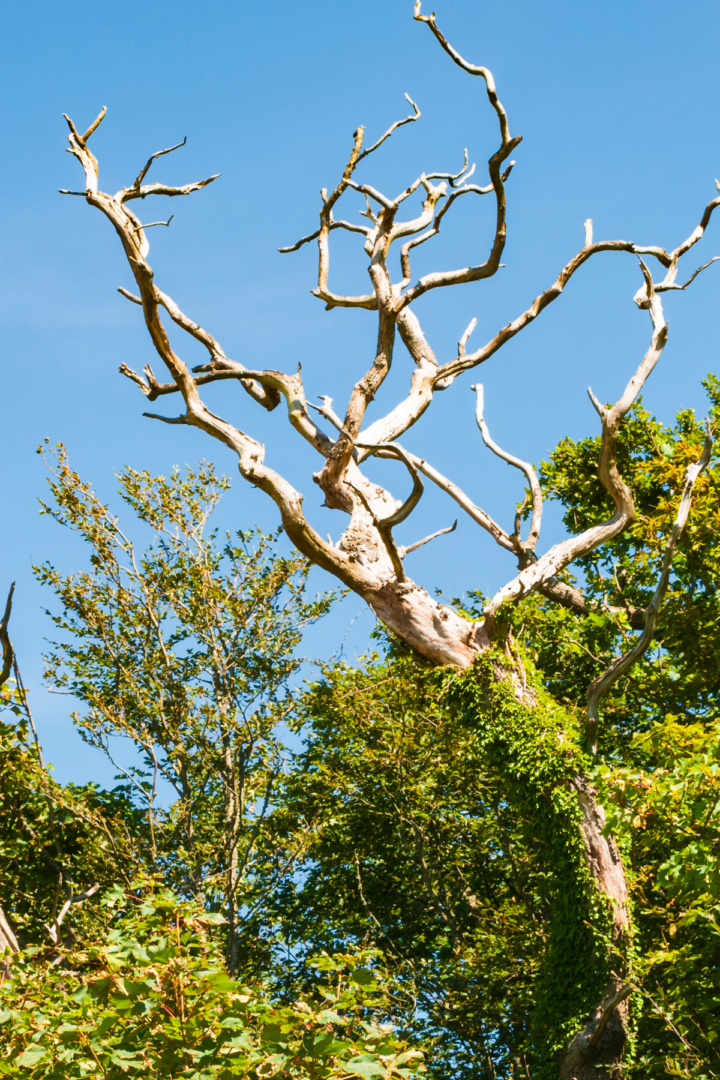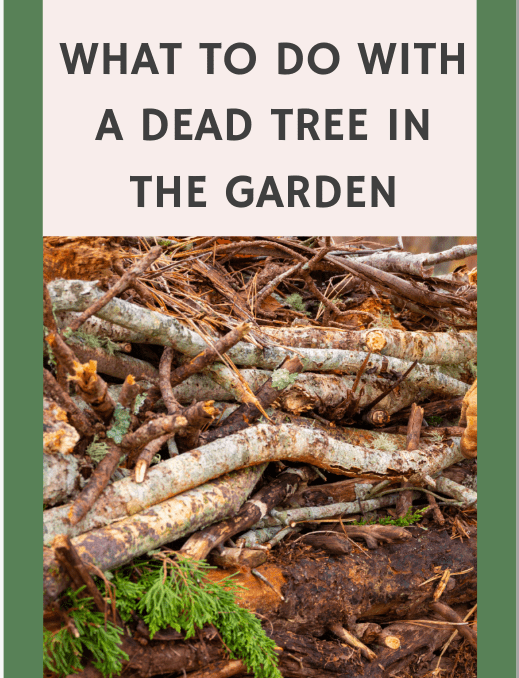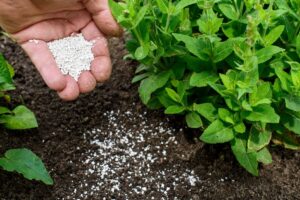Disclaimer: This blog post contains affiliate links. If you make a purchase through these links, I may earn a small commission at no additional cost to you. Learn More. Thank you for supporting our garden community.
What to Do with a Dead Tree in the Garden
Having a dead tree in your garden can be disheartening. However, this unfortunate event provides a unique opportunity to transform your garden’s appearance and enhance its overall health. In this blog post, we will guide you through the process of dealing with a dead tree, exploring various options to help you make the best decision for your garden.

Dead trees can appear out of nowhere (well, not literally), so it is important to know what to do with them when one has died in your garden.
What to Do With a Dead Tree in the Garden
In this post, you will learn about the importance of utilizing dead garden trees in your garden, a way of repurposing and recycling “waste.” You will also learn how to determine if a tree is dead based on its features.
We will discover different possibilities for your tree’s death, including tree pests and tree diseases, with an emphasis on safety and ensuring safe removal. Finally, you will learn different ways to use all the parts of your dead trees, including natural mulch, firewood, and garden art and decor.
Determine the Tree’s Condition
Before taking any action, it’s crucial to assess the tree’s condition and understand why it died, such as from a prolific pest or disease. Some trees can be saved through proper treatment, while others may pose safety risks and require immediate removal. Consulting an arborist can provide valuable insights into whether it’s possible to bring the tree back to life or if removal is the best course of action.
Decide on Removal or Repurpose
Once you have assessed the tree’s condition, you need to decide whether to remove it completely or repurpose it in some way. Consider the following options:

Complete Tree Removal
If the dead tree is a hazard, with large limbs or trunk at risk of falling, it’s best to hire a professional tree removal service. They will ensure safe removal, minimizing potential damage to your garden and property.
If it is a relatively small tree, maybe only a few years old, you can probably remove it safely by yourself. However, it is always important to wear proper equipment and use proper tools, such as eye protection, gloves, and a good-quality chainsaw.

Natural Mulch
If the tree is small and manageable, you can turn it into natural mulch. Chipping the tree into small pieces provides an excellent organic material to enrich your garden’s soil. Spread the wood chips around your plants, creating a natural mulch layer that retains moisture and suppresses weed growth.
Avoid using wood chip mulch in your vegetable garden, as the high-carbon material can rob nitrogen from your soil in the process of decomposition. Instead, apply the wood chips around your perennial plants, such as fruit trees, raspberries, and kiwis.

Firewood
Dead trees are perfect for firewood. Cut the tree into manageable logs and season them by storing them in a dry place for at least six months. This way, you can use the wood for a cozy fireplace or an outdoor bonfire, providing warmth and ambiance.

Habitat Creation
Dead trees are beneficial for wildlife. They can be transformed into a wildlife habitat, attracting birds, insects, and small mammals. Leave the tree as it is, allowing it to decay naturally and become a sanctuary for biodiversity in your garden.
You can also chop it down and lay the trunk on the ground, allowing the ecosystem to overtake it.

Hugelkultur
Your dead trees can also be used to make a hugelkultur-style raised garden bed. In this process, you would layer organic matter in the bottom 2-thirds of your raised garden, allowing it to decompose and provide nutrients for your plants. In the case of the dead tree, you would cut it into pieces and lay them at the very bottom, as they take the longest to decompose.
As a precaution, do not put dead walnut trees in your garden. Walnut trees contain a compound known as juglone, which is toxic to most garden plants.
Garden Art and Décor
If you have a creative streak, repurpose the dead tree as a garden sculpture or unique piece of garden décor. With some imagination and the right tools, you can carve the wood into beautiful shapes or use the trunk as a centerpiece for a flower bed.

Alternatively, you can try whittling. Whittling is the process of carving wood with a knife to make things like bowls, spoons, or miniature sculptures of animals.
Safety Precautions
When dealing with a dead tree, ensure you follow proper safety precautions:
- Wear protective gear, including gloves, goggles, and sturdy clothing.
- If you decide to remove the tree yourself, use proper tools and techniques to prevent accidents.
- When using the tree for firewood, remember to stack it securely and keep it away from any ignition sources.
- Avoid using walnut trees in the garden, as they contain juglone, a substance that is toxic to plants.
Future Prevention
After dealing with the dead tree, focus on preventing such occurrences in the future:
- Regularly inspect your trees for signs of diseases or pests.
- Prune and trim trees appropriately to improve their overall health and structural integrity.
- Maintain proper irrigation and ensure adequate drainage for healthy root systems.
Frequently Asked Questions
Yes, a dead tree can be dangerous if it falls and damages property or injures someone.
In some cases, a dead tree can provide habitat for wildlife like birds and insects. If the tree is located in a safe area and isn’t a danger to people or property, you might consider leaving it standing.
Yes! With proper precautions, some parts of a dead tree can be reused for firewood, mulch, or even crafting projects. Be sure the wood is dry and free of pests before bringing it indoors.
You can use woodchips for mulch in your garden paths or around trees and shrubs. You can also check with your municipality to see if they have a woodchipping program.
Even More Gardening Ideas
Here are a few more posts to get the ball rolling in your garden!
Products
For all-purpose organic fertilizers, check out Arber.
To buy organic, non-GMO garden seeds, check out SeedsNow.
For a wide selection of garden plants, check out Nature Hills Nursery.
For gardening equipment, check out Bootstrap Farmer.
Conclusion
By following these steps, you can transform the loss of a dead tree into an opportunity for your garden’s enhancement. Whether you choose to repurpose the tree, enhance wildlife habitat, or create garden art, turning a dead tree into something useful and beautiful will undoubtedly add value and charm to your outdoor space.
If you want to learn more about gardening, foraging, nature, and sustainability, check out The Real Gardener on Instagram, YouTube, and Pinterest.
Pin this post for later:









Leave a Reply